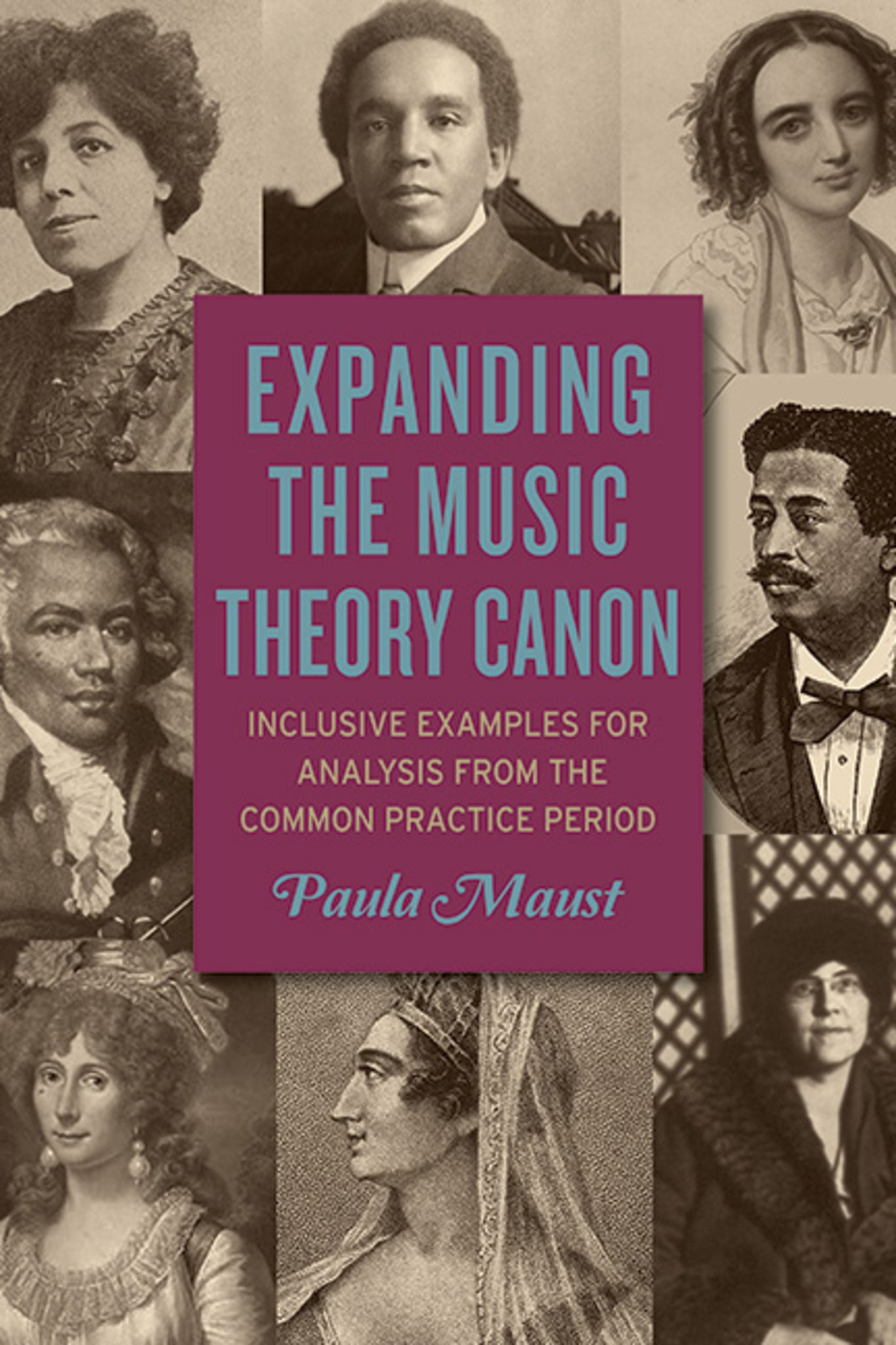We're sorry. An error has occurred
Please cancel or retry.
Expanding the Music Theory Canon

Some error occured while loading the Quick View. Please close the Quick View and try reloading the page.
Couldn't load pickup availability
- Format:
-
01 December 2023

The first music theory anthology to provide 255 topically arranged examples by 67 historical women and people of color.
Featuring music by sixty-seven historical women and/or people of color, Expanding the Music Theory Canon is designed to supplement any introductory Western classical music theory curriculum. At a time when many academics are focused on increasing diversity and inclusion, this book provides the means to seamlessly incorporate works by underrepresented composers into music theory core courses. The anthology's 255 musical examples are organized topically and include excerpts as well as nineteen complete pieces for analysis. Each chapter begins with guided analysis questions aimed at students approaching these concepts for the first time. Notably, this anthology provides a biography and image for each composer, which is particularly significant since works by these individuals have rarely been included in previous textbooks or anthologies. A related website, www.expandingthemusictheorycanon.com, provides additional examples and links to recordings when available. All musical examples in the anthology have been classroom-tested with music majors and minors at a major conservatory, at private and public universities, and at community colleges. Detailed tables provide suggestions for using this book in conjunction with the major introductory theory textbooks.
A special set of online exercises has been prepared by the book's author using the Auralia & Musition software programs; you can find further information here: https://www.risingsoftware.com/expanding-the-music-theory-canon.
Additional examples and a blog offering teaching suggestions may be found at: https://www.expandingthemusictheorycanon.com.


"This book is a welcome addition and valuable resource for teachers of music theory at every level who are looking to expand the music to which they expose their students and study. I therefore foresee this becoming an important resource in music theory—and by extension music history pedagogy." — Early Music America
"Paula Maust's Expanding the Music Theory Canon is an indispensable resource for music theory educators who wish to move beyond the narrow confines of twentieth-century academic music. Now that we music scholars have finally come to the consensus opinion that it was exclusionist to teach only a handful of so-called canonic composers who, in the United States, were of necessity both white and male, we all desperately need resources outlining the rich and varied compositional output of those who identified otherwise. Because sources have been hard to locate and procure, musicians wishing to expand the canon are often left with few good resources to work with. Maust's anthology goes a long way in solving this dilemma. With sections on and examples of the basic topics of common-practice tonality—such as scale types, various meters, melodic embellishments, harmonic syntax, formal structures, and post-tonal topics—Maust's anthology will be invaluable to all who wish to make the music classroom more inclusive of all students, and more welcoming for everyone." — Philip Ewell, Professor of Music Theory at Hunter College, CUNY and author of On Music Theory, and Making Music More Welcoming for Everyone
Praise for Paula Maust's website, Expanding the Music Theory Canon:
"Congratulations on completing this wonderful project. This is such a significant contribution to the field of music theory." — Joseph Chi-Sing Siu, University of Maryland Baltimore County
"She's doing what most of us are talking about and not knowing how to do." — David Forrest, Texas Tech University and President, Texas Society for Music Theory
Acknowledgments
Editorial Principles
Introduction
How to Use This Anthology
PART I: FUNDAMENTALS
1. Major and Minor Scales; Diatonic Modes
2. Triads and Seventh Chords
3. Simple Meters
4. Compound and Asymmetrical Meters
5. Borrowed Beat Divisions, Polyrhythms, and Hemiolas
PART II: EMBELLISHING TONES
6. Passing Tones
7. Neighbor Tones and Incomplete Neighbors
8. Appoggiaturas and Anticipations
9. Pedals
10. Suspensions
PART III: HARMONIC PROGRESSIONS
11. Cadences
12. Tonic and Dominant Triads
13. The Dominant Seventh Chord
14. The Leading-Tone Triad and Seventh Chord
15. Predominant Triads and Seventh Chords; the Embellishing Subdominant
16. Second-Inversion Triads
17. Submediant and Mediant Triads
18. Secondary Dominants
19. Augmented Sixth Chords
20. The Neapolitan
21. Modal Mixture
22. Common-Tone Diminished Seventh Chords
23. Chromatic Mediants
24. Diatonic and Chromatic Modulation
25. Sequences
PART IV: FORMAL STRUCTURES
26. Phrase Structures
27. Binary Form
28. Sonata Form
29. Minuet and Trio
30. Rondo and Sonata-Rondo Forms
31. Theme and Variations; Ground Bass
32. Fugue
33. Large Ternary Form
Composer Biographies
Bibliography
Index



